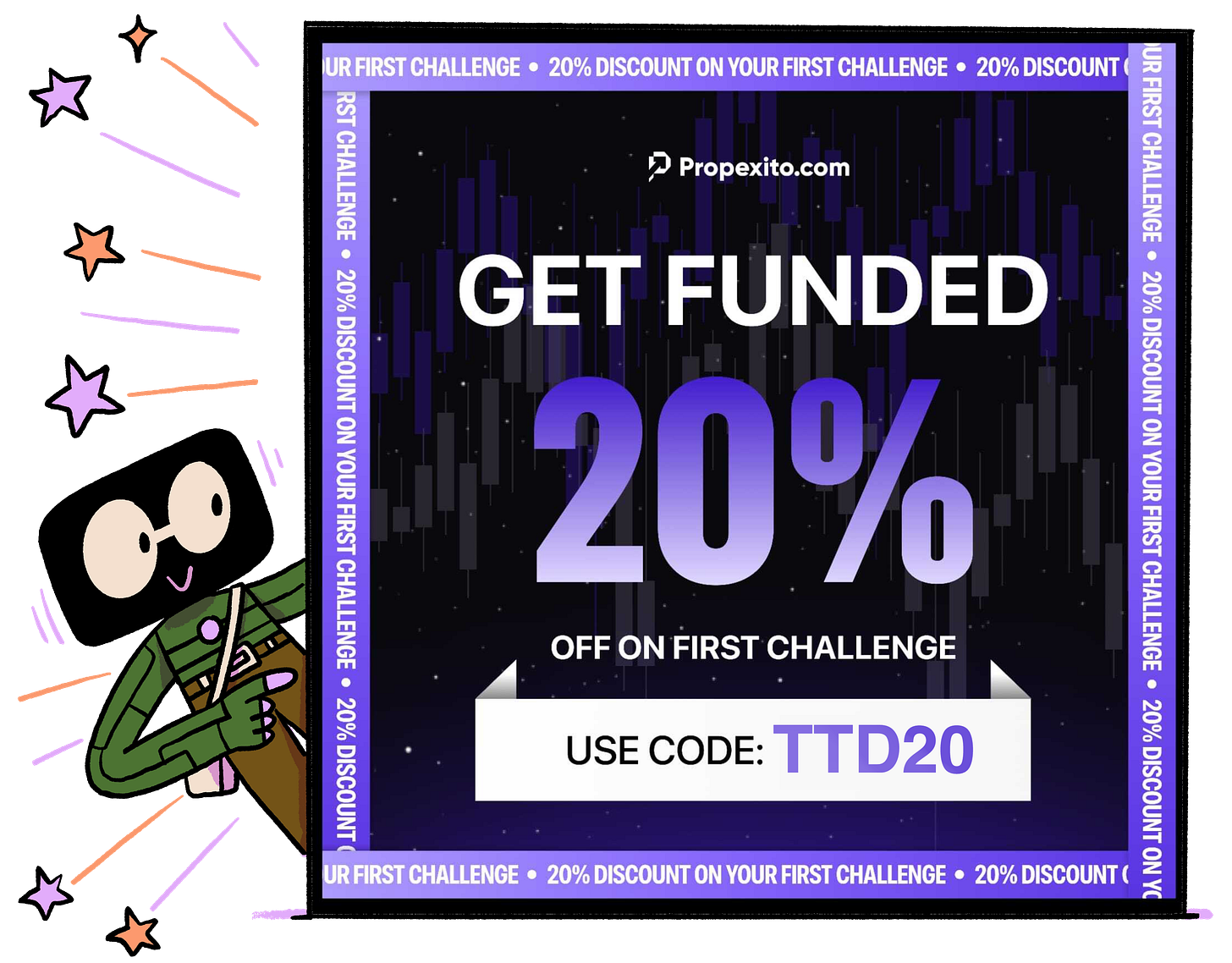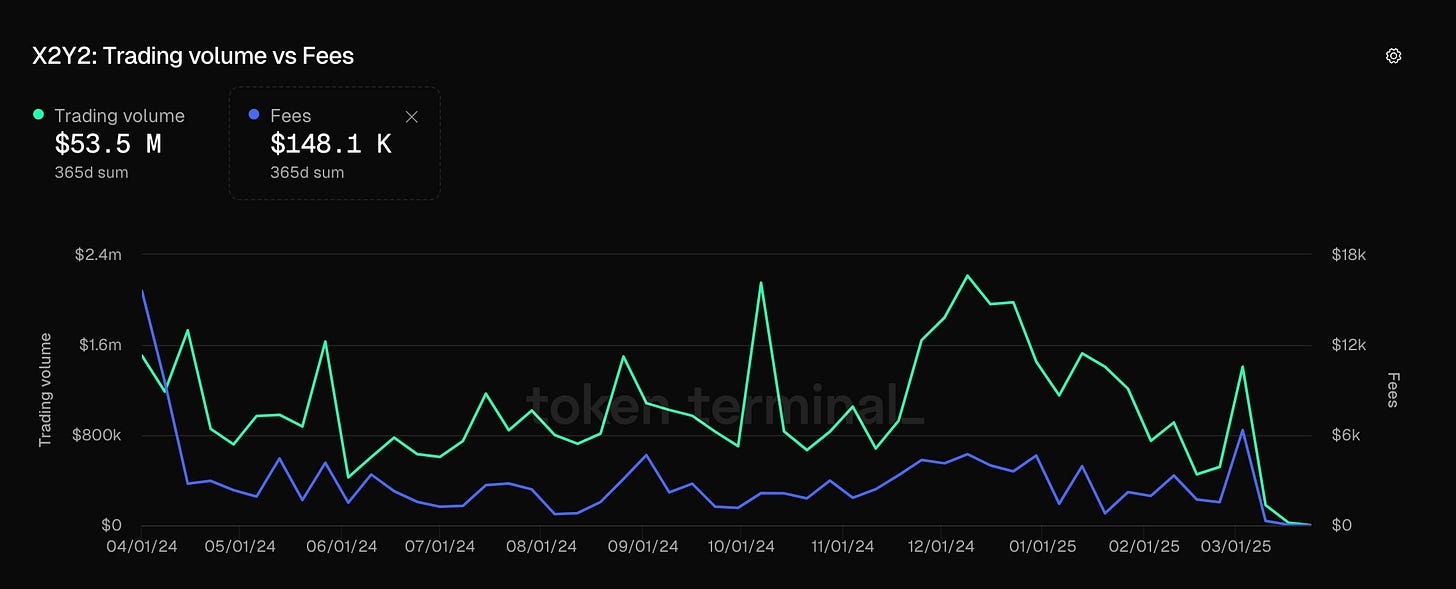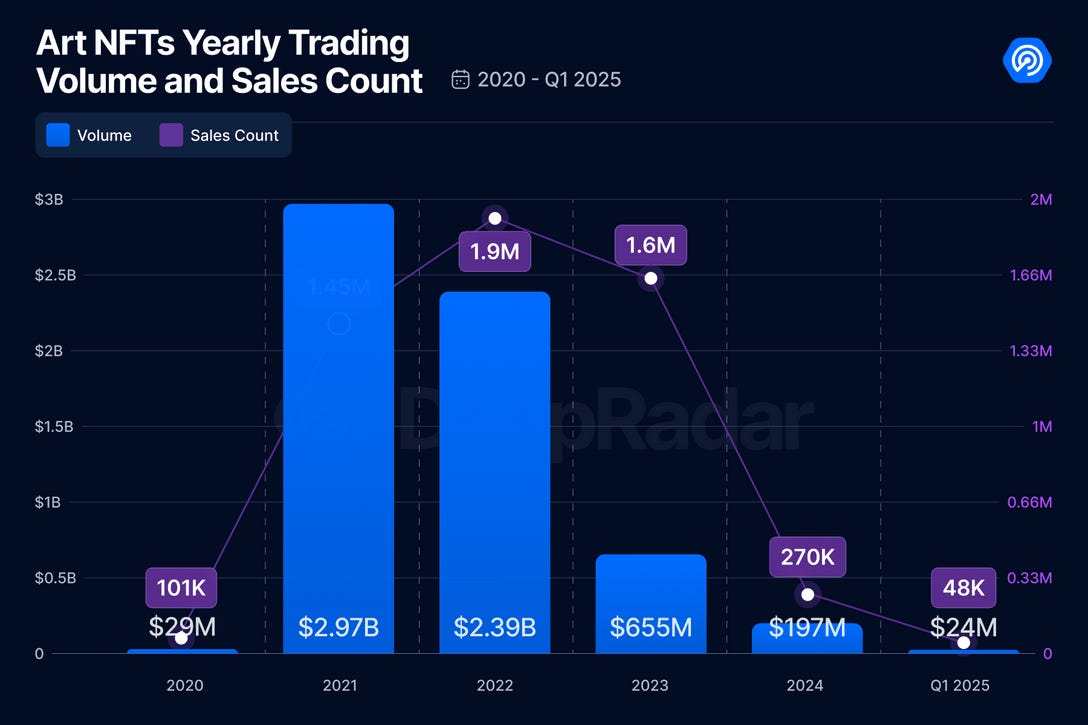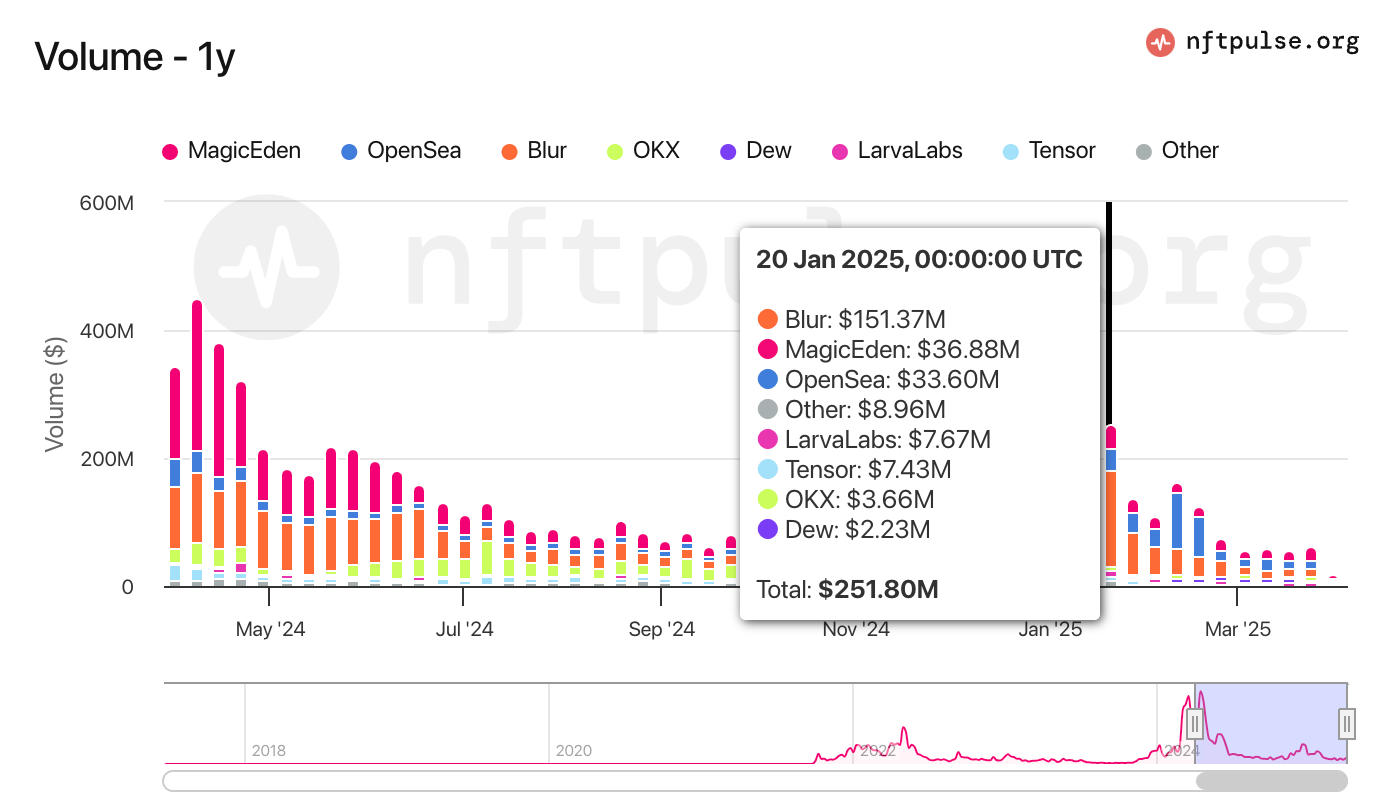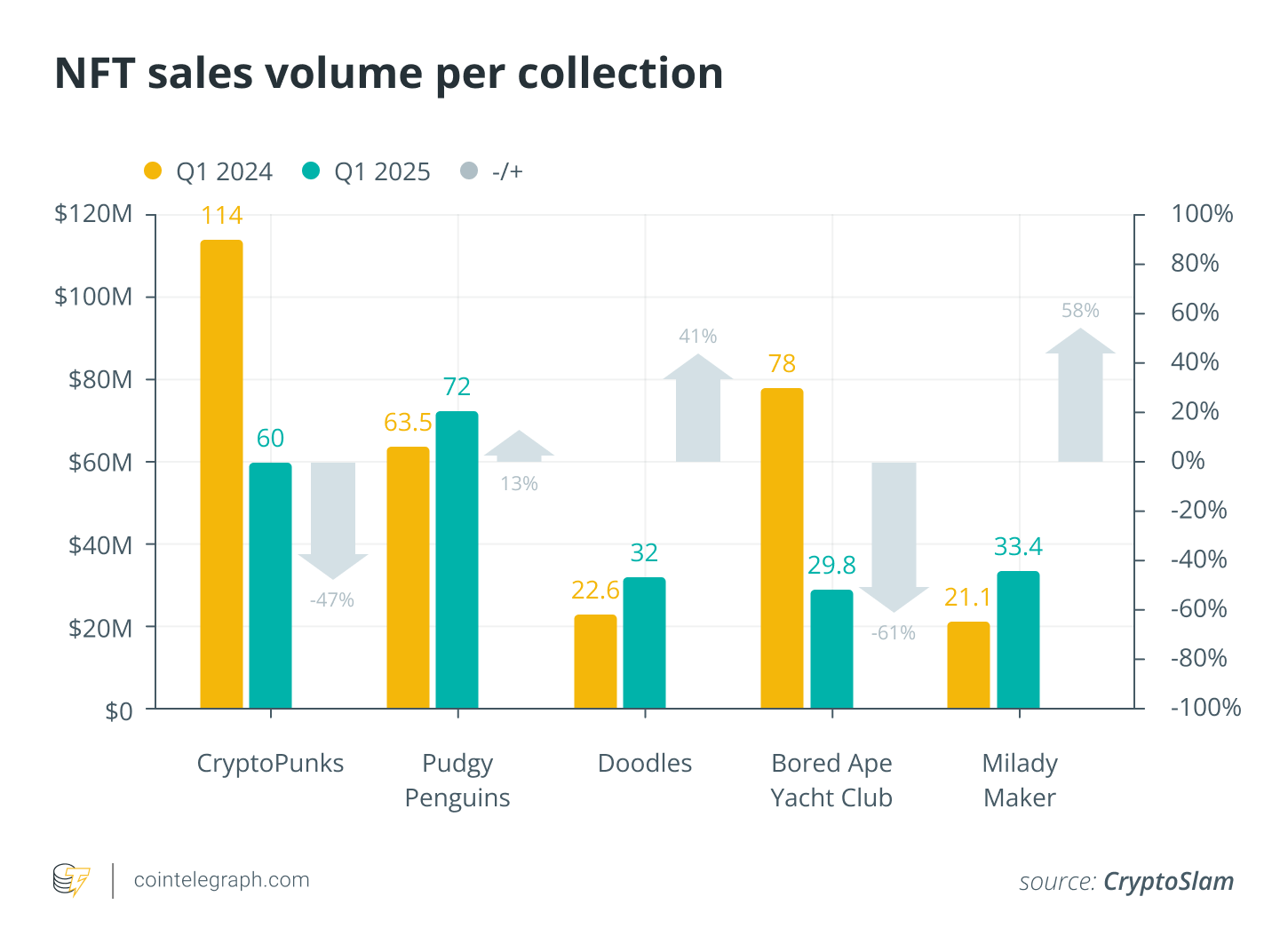Hello y’all. Happy Wednesday.
During the railroad mania of the 1840s, investors built magnificent train stations. The dot-com bubble gave us sprawling Silicon Valley campuses. And the NFT boom of 2021? It spawned dozens of digital marketplaces, each promising to become the Christie's or Sotheby's, the two largest auction houses, of the blockchain era.
Two of those marketplaces are closing their doors, one by one.
This week, X2Y2 joined Bybit, Kraken, and even LG Electronics in shuttering their NFT marketplaces. As trading volumes collapse and fees approach zero, the exodus raises an uncomfortable question: was the entire NFT marketplace model built on a foundation of sand?
Today we dive into the graveyard of digital dreams and see what bones we can unearth.
Special Deal for Traders: Big Funds, Bigger Profits!
Tired of trading small? What if you could trade with serious capital — without risking your own? That’s where Propexito comes in.
Here’s the deal
Pass the challenge & prove you’ve got the skills
Get funded and trade with Propexito’s capital
Keep up to 90% of your profits—because you earned it
TTD exclusive: 20% off your challenge with code TTD20
No more excuses. No more small trades. Just pure profit potential.
Grab your 20% discount & start trading with Propexito!
When NFTs burst onto the scene in 2021, they were heralded as the digital revolution that would disrupt this ancient business model.
Marketplaces like OpenSea slashed commissions to a mere 2.5%, while upstarts like X2Y2 and Blur pushed fees even lower — sometimes to zero.
Disruptive business model can't pay employees, though.
This week, X2Y2 became the latest NFT marketplace to announce its closure after three years of operation. The shutdown, scheduled for April 30, follows similar announcements from Bybit, which will close its NFT marketplace on April 8, and Kraken, which shuttered its NFT platform in February.
Even LG Electronics is pulling the plug on its NFT platform, LG Art Lab, after a three-year run.
These aren't just isolated business decisions. They're the end result of a market that has collapsed under the weight of its own speculation.
The broader NFT market has fallen into a death spiral.
Trading volumes on X2Y2’s marketplace have dropped nearly 90% from their peak.
Total NFT sales fell to $1.5 billion in the first quarter of 2025 — a 63% decline from the $4.1 billion recorded in the same period last year. And nothing compared to the good old 2021.
March 2025 alone saw sales plummet 76% to $416 million, from $1.6 billion in March last year.
Art NFTs trading volume crashed 93% since the 2021 peak to $23.8 million in Q1 2025.
Even blue-chip collections have not been spared. The floor price for Bored Ape Yacht Club NFTs has crashed 90% from its May 2022 peak of 153.7 ETH to just 15.35 ETH today.
Despite the carnage, marketplace competition has never been fiercer.
Get 17% discount on our annual plans and access our weekly premium features (HashedIn, Wormhole, Rabbit hole and Mempool) and subscribers only posts. Also, show us some love on Twitter and Telegram.
Death by a Thousand Cuts
The average NFT marketplace today faces a host of challenges.
First, there's the volume problem. When the overall market shrinks by 90%, everyone gets a smaller slice of the pie.
Second, there's the fee compression problem. Marketplaces like Blur pioneered zero-fee trading models, which quickly became the industry standard. In January 2025, Blur dominated with 50% of all marketplace volume despite charging no fees — a pyrrhic victory if there ever was one.
Third, there's the network effect problem. As X2Y2 noted in its farewell post, "Marketplaces live or die by network effects." When buyers and sellers concentrate on a few platforms, the rest are left to wither.
Fourth, there's the ongoing cost of security and compliance. Bybit's decision to close its NFT marketplace came just five weeks after suffering a $1.4 billion hack attributed to North Korea — a stark reminder that operating any crypto platform carries significant risk.
Read: Crypto's Biggest Heist Rocks Bybit 🦹🏻♂️
Fifth, there's the reality that the speculative bubble that drove NFT prices skyward has finally and definitively burst.
The combination of these factors has created an environment where only the strongest can survive — and even they are struggling.
Survivors And Pivots
If the NFT market looks bleak, why not just pivot?
That's exactly what X2Y2 and others are doing. In its announcement, X2Y2 revealed plans to focus on "AI-powered, decentralised financial tools" — joining the exodus from JPEGs to algorithms.
"This isn't just another project," X2Y2's team wrote. "It's our shot at creating real, long-term value in crypto for the broader community we're proud to serve."
The shift mirrors a broader trend in tech: when your current business model falters, chase the next hype cycle.
Yesterday's NFT believers are today's AI evangelists.
Among the large players, Blur and OpenSea remain locked in a battle for dominance. Blur captured 50% of all marketplace volume in January, with Magic Eden and OpenSea tied at 16% each. But volume isn't everything — Magic Eden led in users with 1.4 million in 1 year.
A few specialised marketplaces have found niches where they can still thrive. Magic Eden has embraced cross-chain trading, while Tensor has found a home on Solana.
Rare Bright Spots
Despite the overall market downturn, a few collections have bucked the trend.
Pudgy Penguins, Doodles, and Milady Maker are showing rare bright spots.
These success stories, however, are the exceptions that prove the rule. They've succeeded by creating mainstream partnerships, building strong communities, or cultivating cult-like followings — not by relying on pure speculation.
Wall Street's Last-ditch Attempt
In a surprising twist, just as the retail NFT market collapses, Wall Street is showing interest.
On March 22, Canary Capital filed to launch a Pudgy Penguins and PENGU ETF in the United States, followed by another filing for a SUI-based ETF.
Canary Capital CEO Steven McClurg told Decrypt he believes the NFT market could experience a revival, pointing to "more liquid digital art" and a more crypto-friendly regulatory environment.
"Now that the SEC determined digital art and collectibles to not be securities, I see the long-term trend in digital art and digital rights to those works," McClurg said. "Major barriers have been removed."
Many in the crypto community think these ETF filings as desperate attempts to pump dying collections or capitalise on regulatory goodwill rather than substantive innovations.
Token Dispatch View 🔍
The mass exodus of NFT marketplaces signals the end of an era — one dominated by speculation and inflated valuations.
Charu Sethi, president at NFT-focused Polkadot and Kusama chain Unique Network, insists that the closures don't signal the death of NFTs, but rather a transition.
"The speculative phase focused on collectibles and trading is over, but NFTs are now entering their next growth era as core infrastructure enabling massive opportunities in gaming, AI, fan engagement and content authentication," she told Cointelegraph.
Alexander Salnikov, co-founder of the Rarible NFT marketplace, echoed this sentiment: "NFTs remain one of the most powerful primitives in crypto, and the next wave will be led by projects that focus on strong use cases, whether in gaming, digital identity or brand engagement."
After all, the utility of uniquely identifiable digital assets extends far beyond cartoon apes and penguins.
But for many of the platforms that rose to prominence during the 2021-2022 boom — like X2Y2, Bybit, and Kraken's NFT marketplace — the future has already been decided. They won't be around to see whether NFTs can reinvent themselves.
For those still standing, the path forward is clear: find utility beyond speculation, or join the exodus.
When OpenSea achieved its $13 billion valuation in January 2022, it was betting that creators and collectors would continue paying premium fees for access to liquidity. Then came Blur, LooksRare, X2Y2 and dozens of others, each undercutting the last until the fee race hit zero.
What nobody acknowledged was the inherent contradiction: if NFTs truly were valuable digital assets comparable to physical art, why would anyone trade them on platforms with non-existent security guarantees and zero economic moats?
The marketplace exodus reveals crypto's persistent blindspot — confusing technological capability with sustainable business models. Building a decentralised marketplace is relatively easy; building one that generates enough revenue to justify its existence is another matter entirely.
Traditional art markets have survived for centuries because they provide essential services beyond mere transaction processing: authentication, provenance verification, curation, and market-making during downturns. Most NFT marketplaces offered none of these.
The next generation of NFT platforms will need to create genuine value through curation, risk management, or novel utility.
Maybe that looks like Magic Eden's cross-chain approach. Maybe it resembles Tensor's blockchain-specific focus. Or perhaps it's something entirely different — NFT marketplaces that double as intellectual property licensing platforms or digital identity hubs.
What's certain is that the days of charging collectors to swap JPEGs back and forth are over. And perhaps that's exactly as it should be.
Token Dispatch is a daily crypto newsletter handpicked and crafted with love by human bots. You can find all about us here 🙌
If you want to reach out to 200,000+ subscriber community of the Token Dispatch, you can explore the partnership opportunities with us.
Fill out this form to submit your details and book a meeting with us directly.
Disclaimer: This newsletter contains sponsored content and affiliate links. All sponsored content is clearly marked. Opinions expressed by sponsors or in sponsored content are their own and do not necessarily reflect the views of this newsletter or its authors. We may receive compensation from featured products/services. Content is for informational purposes only, not financial advice. Trading crypto involves substantial risk - your capital is at risk. Do your own research.









